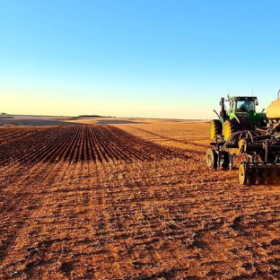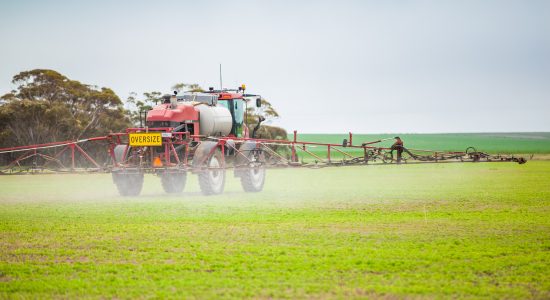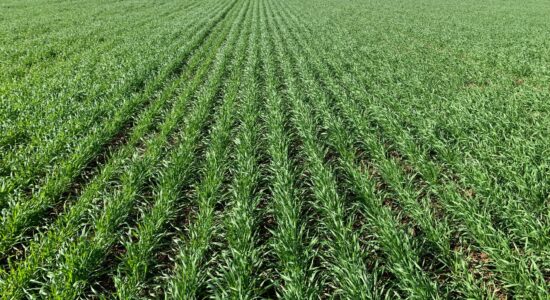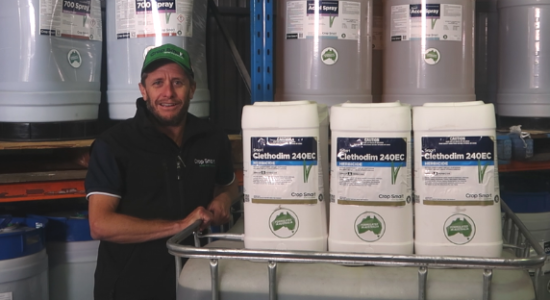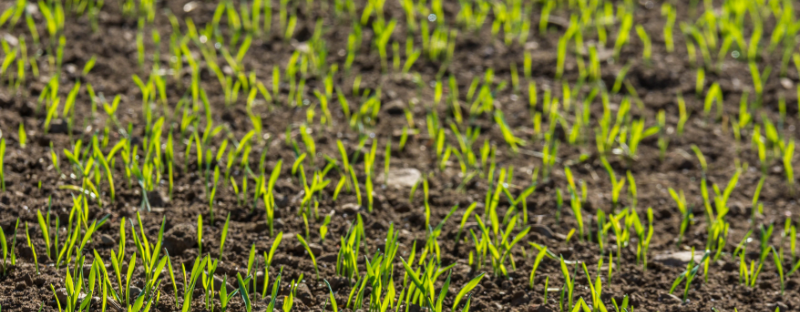
Early Post Sowing and Early Post Emergent Considerations
Agronomy Update May 2024
Kent Wooding from Ag Insights shares the latest agronomy advice on Early Post-Sowing and Early Pre-Em considerations for 2024.
Topics covered in this agronomy update:
- Vetch
- Lentils
- Canola
- Diflufenican
- Mateno Complete
- Boxer Gold
- Zinc
Vetch
Keep an eye out for insects. RLEM and BOM may be an issue for emerging vetch. If you have applied Cruiser or Imidacloprid on the seed, these pests will not be an issue. These seed applied insecticides have limited or no activity on Bryobia mite and lucerne flea. You still need to monitor for these and control them if necessary.
There are limited herbicides we can use for broad leaf weeds once the vetch has emerged. The variety, Popany vetch is a purple vetch and grown in the high rainfall zones and is more tolerant to several herbicides post emergent.
Common vetch varieties grown in the low to medium rainfall zones like Morava, Rasina and Timok are sensitive to broadleaf herbicides post emergent. Some Agronomists have had reasonable success with applications of Ecopar Herbicide. Ecopar is now registered in vetch at 800ml/ha plus 0.2% BS1000 wetter (Smart Wet 1000). Ecopar can still reduce biomass so you will need to talk to your Agronomists to obtain specific advice for your crop and conditions. Growers need to weigh up potential biomass reduction with weed control levels. It is considered more of a salvage option rather than a planned strategy. Ecopar is a contact herbicide and will be most effective on small weeds.
Lentils
Insects: see above under Vetch.
Smart Haxoxyfop 520 EC (Haloxyfop) MRL’s are changing in some overseas markets. Authorities are confident that our uses will still come under these new MRL’s. It is best to apply at earlier crop stages. See Clethodim timings.
Smart Clethodim 240 EC can only be applied in lentils up to the 7 node stage. Early applications to smaller weeds will always work better.
Canola
Insects: see above under Vetch.
Monitor every two days for signs of insect or slug damage. Your Agronomist cannot be in the paddock that often so the responsibility will rest with you, the grower.
The herbicide program can be quite congested for canola. Smart Clethodim 240 EC must be applied prior to the 8 leaf stage or early bud.
Tenet (Metazachlor) may be a good option for ryegrass control in canola. In can be applied in mixes with Clethodim but only between the 1-3 leaf stages of the canola. As we experience more herbicide resistance in ryegrass, products like Tenet will become very important.
Do Not use Smart Haloxyfop 520 (Haloxyfop) in canola. It is registered but export markets are unlikely to take crops treated with Haloxyfop or accept canola found with any residues of Haloxyfop.
Tenet is predominantly absorbed by the roots and shoots of germinating weed seedlings. For best results, apply in the presence of good soil moisture with 10 mm rainfall within 10 days of application. When using Tenet EPE, always apply in a tank mix with Smart Clethodim 240 EC and Smart Accel Spray Adjuvant to ensure control of emerged weeds and to enhance foliar uptake of Tenet.
Tenet is compatible with Intervix/Intercept when used in CL canola and Atrazine in TT canola.
Agronomists and Researchers have not seen any crop damage by extending application out to the 6-8 leaf stage of the canola but care should be taken as it is not on label.
Diflufenican
Smart Diflufenican 500 SC (diflufenican or DFF). DFF can be applied to lentils, field peas and lupins at the growth stages listed below. Think of DFF more as a pre-emergent herbicide. It has good soil residual and works best on emerging weeds. DFF will control emerged weeds but they must be small and actively growing. Don’t wait for the weeds, apply DFF at the earliest allowable crop stage to ensure best results. Ideally weeds will be smaller than a 50-cent piece or still to emerge from the soil. Weeds larger than the base of a beer or soft drink can will be difficult to control with DFF and you can expect failures.
DFF is a group 12 (F) contact herbicide. Excellent coverage of the weed and soil is critical to obtain good results.
Best results are achieved when it is applied to moist soil and receives follow up rain within a few days. The rain is not critical to wash the DFF into the soil but it helps to keep the soil surface moist.
- Field Peas – apply after the 3rd node stage. A tank mix with MCPA Amine can improve the control of some weeds but it can also cause more crop effect. It may delay crop maturity by 1-2 weeks.
- Lentils – Apply after the 3rd leaf stage
- Lupins – Apply from the 2 leaf stage. DFF can also be applied to lupins PSPE with simazine.
Smart Diflufenican 500 SC can be damaging to crops if they are stressed. If plant are under attack by insects, control the insects first before applying DFF. Do not tank mix in this scenario.
Do not apply a tank mix of DFF and grass selective herbicides. The products are compatible but it will lead to unacceptable crop damage. The oil adjuvants required for the grass selective herbicides make the DFF too “hot”.
Mateno Complete
Mateno Complete is a pre emergent herbicide for grass and broadleaf weed control. It contains three active ingredients – Pyroxasulfone (also found in Sakura), Diflufenican (also found in Smart Diflufenican 500 SC) and Aclonifen (a new active). The combination provides plant uptake (weeds) by the roots, shoot and leaf with added residual control.
In order to achieve satisfactory levels of ryegrass control with the EPE use, you must also use an effective pre-emergent ryegrass herbicide IBS.
It can be used as a pre emergent herbicide but in this instance I will focus on the Early Post Emergent (EPE) use. One of the handy features of the EPE use is the weed control across the whole soil surface. Quite often Pre Em IBS herbicide application can leave an untreated furrow that allows weeds to escape and compete with the crop.
It is registered for use in wheat (not Durum) and barley. Discuss the suitability and rates with your Agronomist. Barley is more sensitive and is therefore registered at a lower application rate. Risk of crop damage increases in barley on lighter soil types. It is effective on ryegrass, brome grass and wild radish to name just a few of the registered weeds.
Mateno Complete works best on small weeds or weeds still to emerge from the soil.
Rates in wheat: between crop growth stage 1 leaf to 3 tillers.
Rates in Barley: from crop growth stage 3 leaf to 3 tillers.
It is recommended to base your timing on the crop stage and apply the product as soon as the crop stage allows. Application to moist soil and rainfall following application is required for adequate or best results.
Plant back restrictions:
There is a 21 month re-cropping interval for durum wheat, lucerne, oats and medic.
There is a 9 month re-cropping interval plus 250mm rain for canola and pulses.
Boxer Gold
Boxer Gold is another option for Early Post Emergent (EPE) applications. Growers should not rely solely on Boxer Gold for ryegrass suppression in this situation but it can extend control or suppression to complement an effective IBS grass herbicide. Follow up rainfall to move the product into the weed root zone is required. Boxer Gold can be applied to Wheat and Barley up to the 5 leaf stage but it is recommended to target applications at the 1-2 leaf stage of the crop and weeds.
Ultro 900 Herbicide
Ultro is registered in Broad beans, Chickpeas, Faba beans, Field peas, Lentils, Lupins and Vetch for the control or suppression of Ryegrass, barley grass and Brome grass. It may be a good option to try a paddock of Ultro this season.
Pre emergent IBS.
It can be more consistent than Propyzamide because it is more mobile in the soil and requires less rain to move it into the weed root zone. 5-10 mm of rain is usually sufficient (label states 15-25mm).
The rate range for Ultro is based on crop safety and soil type. Lower rates in sandy soils.
Chickpeas have a PSPE registration. Other crops will have a split IBS/PSPE application registered in the future. 1.1kg/ha IBS followed by 0.6kg/ha PSPE as an example.
Zinc
Zinc is a very important plant nutrient that helps with several functions. To ensure sufficient zinc is supplied to the growing crop, it is required to be available to the plant in the early growth stages. The best time tom apply zinc is with the fertiliser at seeding or on the seed. The next timing is a foliar application.
In cereals, this is prior to tillering. The 3-4 leaf stage is ideal. Zinc is not just a critical plant nutrient but it can also assist the crop to withstand extremes of temperature, disease and other stresses. It is easier to diagnose zinc deficiency in cereals than it is in lentils. Lentils however, do have a higher requirement for zinc so applications in the early growth stages is also going to provide the best results.
Low supply of zinc from the soil is common in Alkaline soils. However, a few other situations can induce zinc deficiencies even in soils with adequate zinc levels.
- The use of lime in acidic soils can also induce a short term zinc deficiency. Lime can also induce a Manganese deficiency.
- Cold and wet soils
- Compacted soils
All the best for a good run through to the end of sowing. Contact the Crop Smart team for further information or if there is anything else we can assist with.

